What is a Pistachio Nut and How Are They Harvested?
What is a pistachio nut? Here’s everything you need to know about this powerhouse protein (spoiler alert: it’s not technically even a nut).
What is a pistachio nut?
First things first: what is a pistachio nut? A pistachio is a culinary nut, but not a botanical nut. True botanical nuts, like acorns or chestnuts, have a seed and shell that are all one and do not not split open upon maturity.
Confused? Let’s try to clear a few things up. Pistachios, walnuts and pecans are technically classified as drupes.
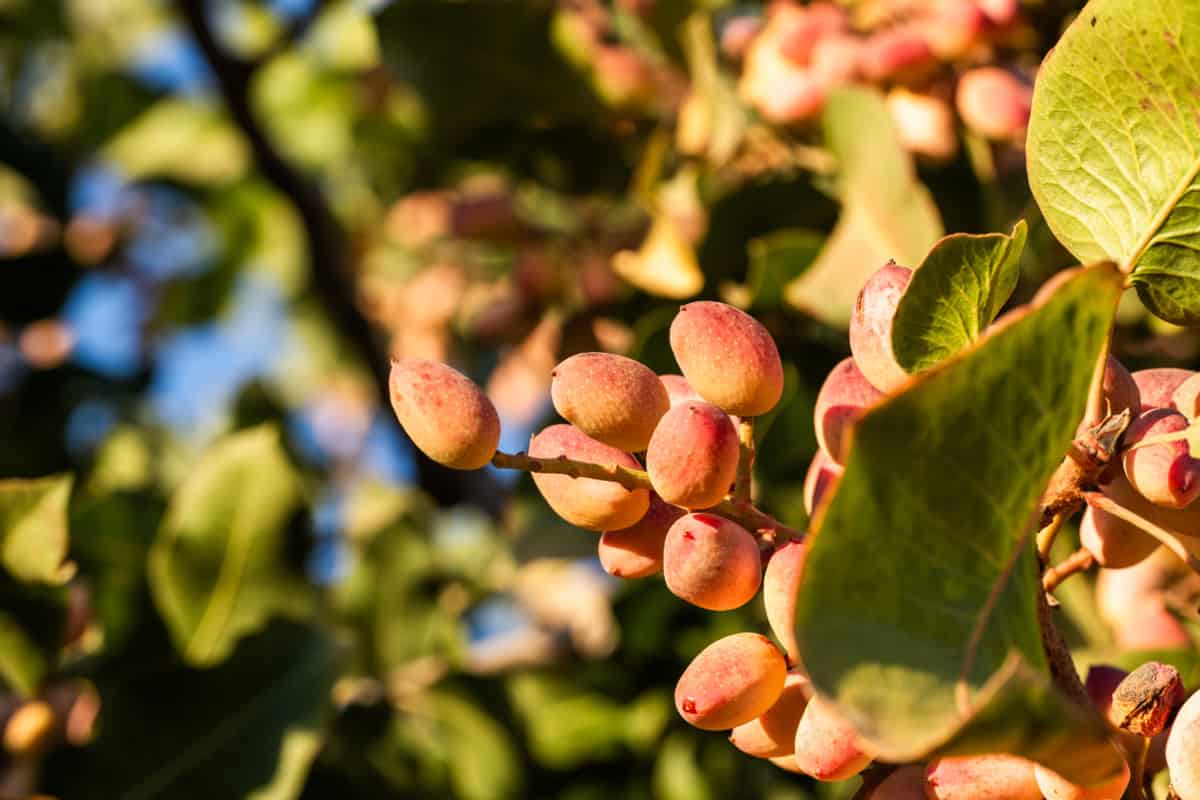
A drupe is a seed surrounded by a husk. Many sources add the descriptor “fleshy husk”, which can be even more confusing. Would you consider a walnut husk fleshy? Yeah…neither would we. To make things even weirder, cherries and peaches are also considered drupes, but in those cases, the flesh is consumed rather than the seed.
Don’t feel too bad if you’re still a little foggy on the concept. Many scientists consider “drupaceous nuts” challenging to classify. The takeaway here is simple – most of the “nuts” you consume are technically seeds.
So…are pistachios a tree nut?
Although pistachios are technically a seed, they are considered a tree nut for culinary purposes.
If you’re allergic to tree nuts, can you eat pistachios?
Pistachio allergies are less common than other tree nut allergies, BUT if you’re allergic to tree nuts, you might also want to avoid pistachios.

Are pistachios healthy?
The culinary crowd adores pistachios for their gorgeous green hue and distinctive flavor – but this beauty isn’t all style and no substance. Pistachios are also a great source of protein and valuable nutrients. According to our friends at American Pistachios, “California pistachios are a nutrient-dense food with heart-healthy fats as well as protein, dietary fiber, potassium, magnesium and antioxidants. Research suggests that pistachios have numerous benefits and may help to maintain good health, support an active lifestyle and reduce the risk of nutrition-related diseases.”
Where are pistachios grown in the US?
Pistachios originated in West Central Asia and have been cultivated for over 3000 years. Like many commodities, pistachios were first planted in California in the 1850s. During the Gold Rush, thousands of people made their way to California, hoping to strike it rich. Most folks soon discovered that California possessed something arguably more valuable than gold – fertile soils and a mild climate suitable for growing almost any crop.
California growers produced their first commercial crop in 1976, over a century later, the first recorded pistachio tree was planted. Since then, the industry has expanded exponentially. Today, the United States is the world’s primary pistachio producer – and 98%+ of all US pistachios grow in the Golden State.
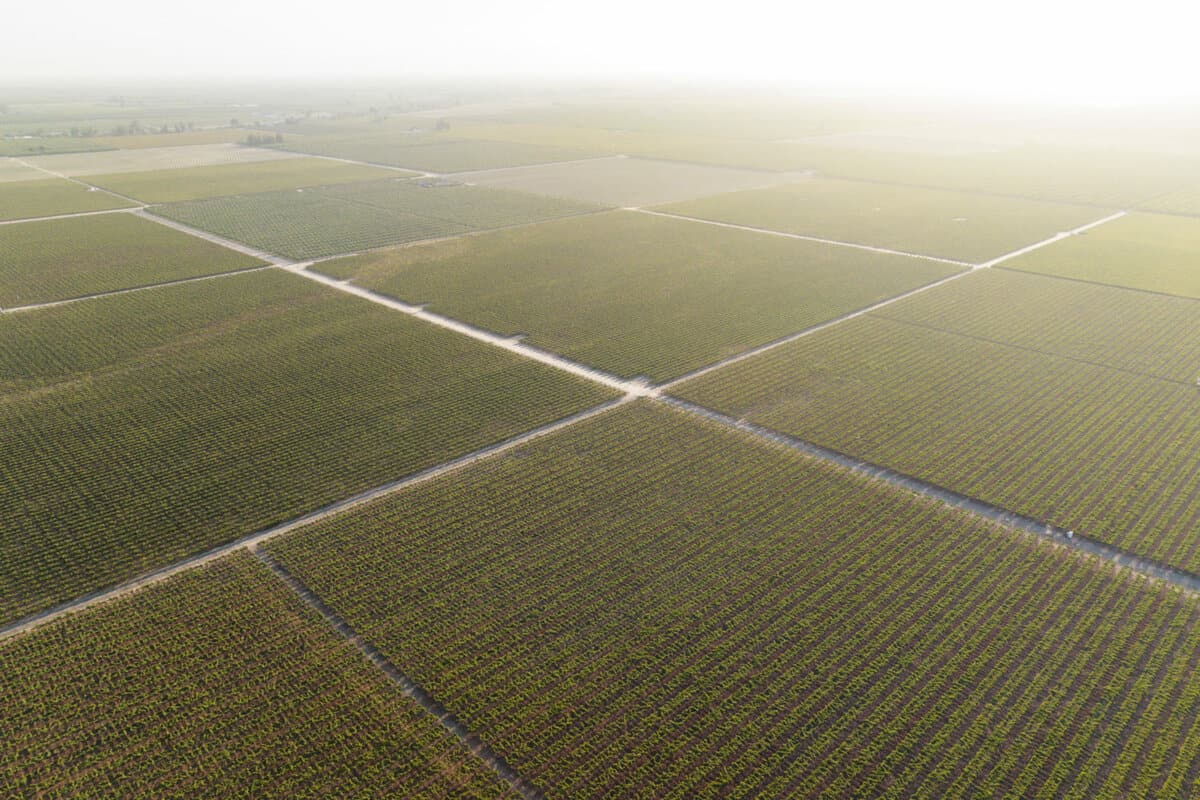
Where in California are pistachios grown?
Pistachios thrive in regions with hot summers and mild, wet winters – like California’s Southern San Joaquin Valley. The vast majority of California’s pistachio growers are located in Kern, Tulare, Madera, Fresno and Kings Counties.
Learn more about how Keenan Farms grows pistachios in the heart of the San Joaquin Valley!

How are pistachios grown?
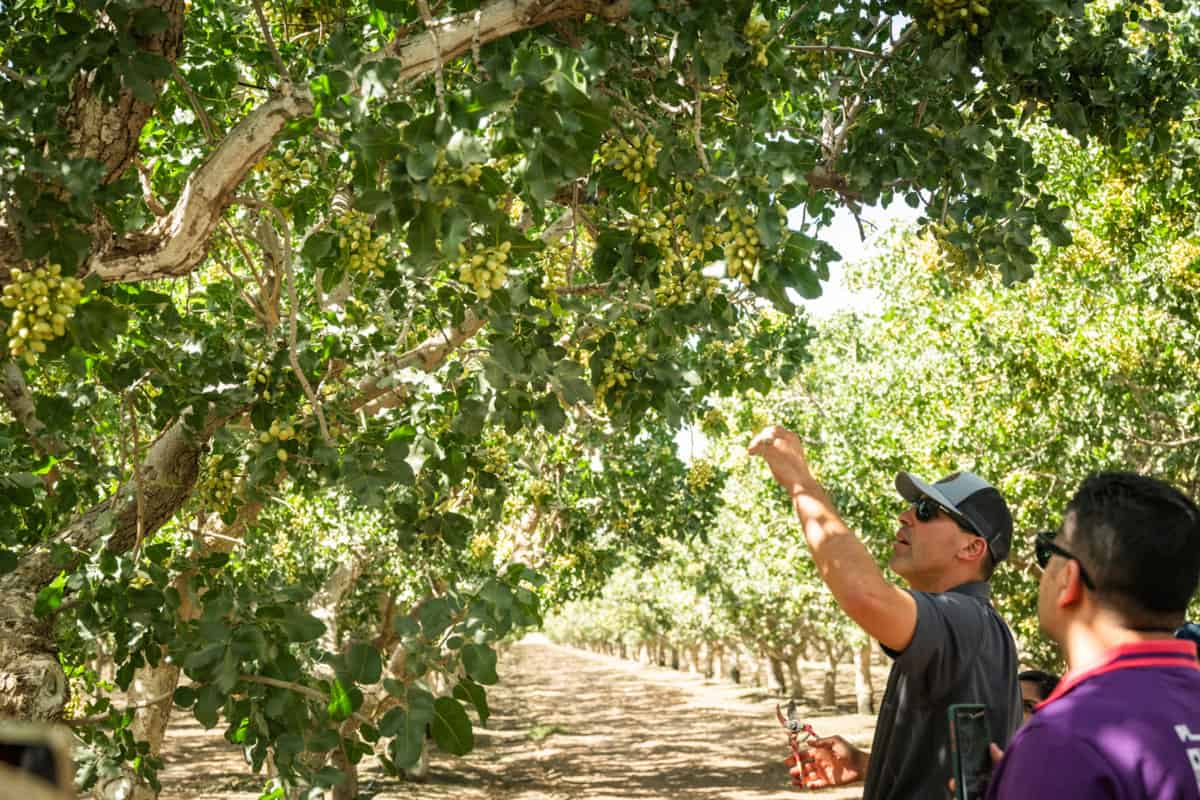
Pistachios grow on trees. Growers harvest new orchards about 7-8 years after the trees are first planted, but trees take 15-20 years to reach peak production. Once established, the orchard remains productive for about 40 years.
Fun fact: pistachio trees can live for over 300 years!
Do pistachio trees need to be pruned?
After harvest (which typically coincides with the arrival of cooler weather), pistachio trees lose their leaves and go dormant. At this point, pruning takes place, either mechanically or by hand. Pruning results in more consistent yields, more effective harvests (if the tree’s canopy is too wide, nuts will not land on the receiver) and healthier trees.
When do pistachio trees bloom?
In California’s Central Valley, pistachios typically bloom between late March and mid-April. Pistachio flowers look more like grape flowers than the individual blooms you’ll find on almond or prune trees. They grow in greenish-red clusters of 30-50 “flowers”.
Are pistachios self-pollinating?
Pistachios are not self-pollinating, but they don’t require bees either. Pistachio trees are designated either “male” or “female”. Growers typically plant one male tree for every eight female trees. When the trees are in bloom, pollen from the male trees disperses into the wind and fertilizes the flowers on the female trees.
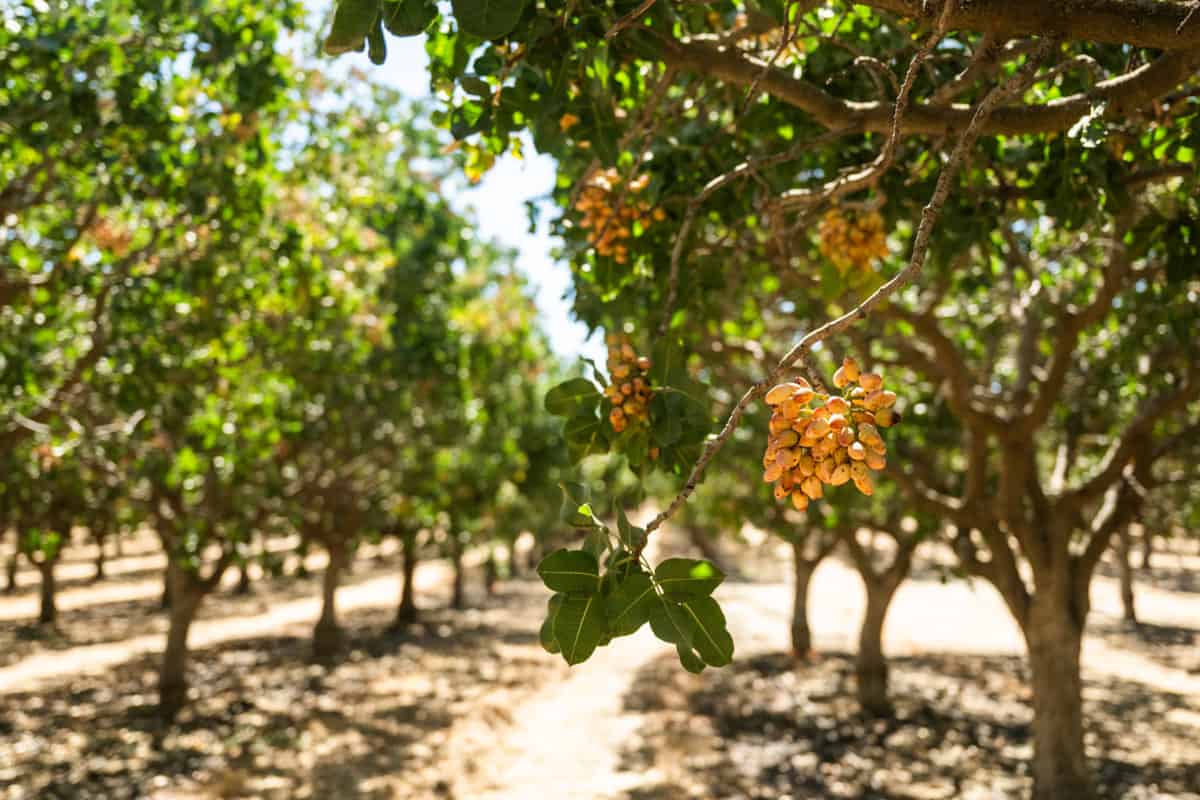
After fertilization of flowers on the female trees, the pistachio kernel begins to develop. The growing kernel pushes on the shell during this time, causing it to split. The protective outer layer (known as a hull) remains intact until the nut ripens, at which point it naturally separates from the shell.
When are pistachios harvested?
California’s pistachio harvest takes place between late August and early October. The timing of harvest depends on several factors, including the weather, the location of the orchard, and the variety of the pistachios.

How do growers know when to harvest pistachios?
Growers know it’s time to harvest their pistachios when the nut has split, and the husk covering the shell is easily removed.

How are pistachios harvested?
Pistachios are machine-harvested. Some growers own their own harvest equipment, while others outsource harvest services. Hilary Porter of Erick Nielsen Enterprises, a custom orchard services provider, gave us an inside look at how pistachios are harvested.
What type of equipment is used to harvest pistachios?
All pistachios are harvested using two essential machines: a shaker and a receiver. The shaker functions precisely as one would imagine – it grabs and shakes the tree from one side of the row. This causes the nuts to fall off the tree onto a receiver machine located on the other side of the row. Most harvesters are either for bulk harvesting, in which nuts are collected in bulk or bin harvesting, in which harvested nuts are collected in bins. Some companies, like Erick Nielsen Enterprises, even develop their own specialty equipment to suit their needs and preferences. When the receiver is full, a bank-out machine unloads the pistachios from the back of the trailer moving them to a loading site, then they are transported to the processor by truck.
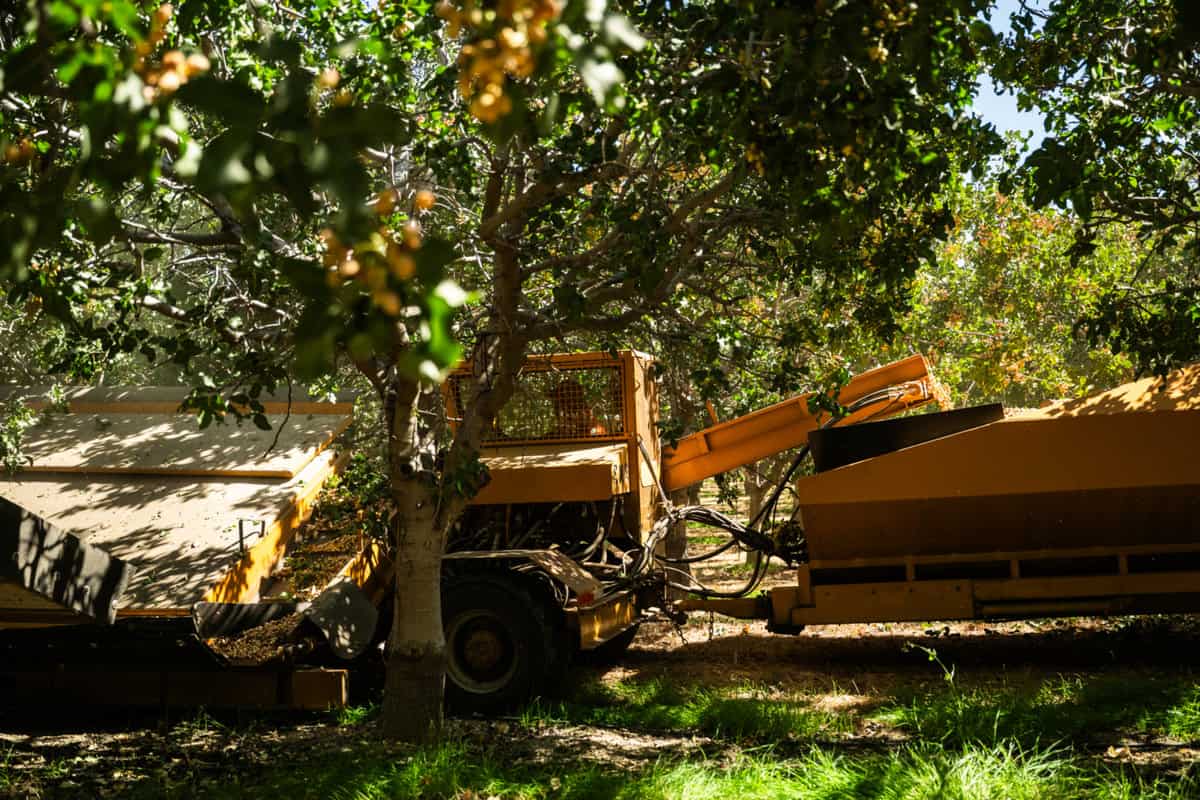
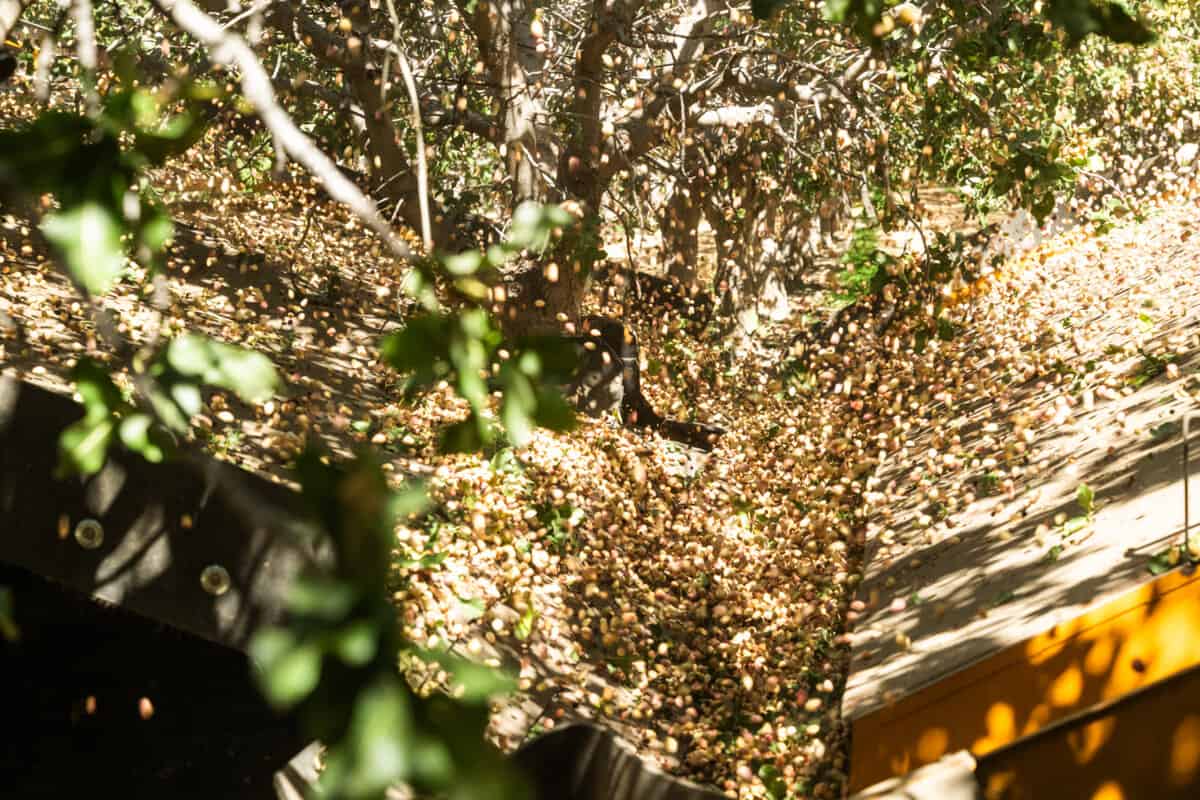
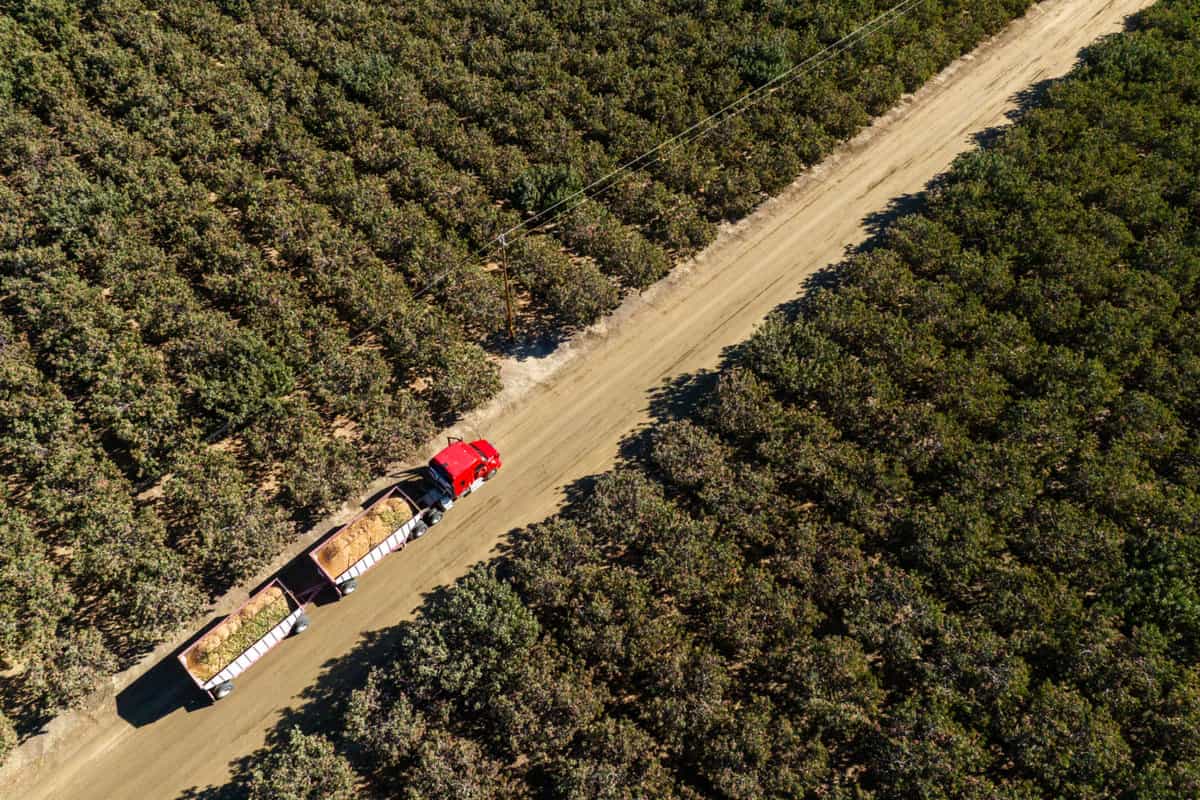
How are pistachios hulled and sorted?
At the processor, pistachios are mechanically hulled within 24 hours of harvest. Removing the outer hull quickly helps to keep the pistachios looking (and tasting) their best! After removing the hull, washing, drying, and sorting takes place. Nuts are sorted by size and any nuts that did not open naturally are discarded. Then, an optical sorting machine inspects the remaining pistachios for any shell staining or discoloration. Finally, the nuts are packaged and shipped to your local grocer. Pistachios are always in season, so they should be available all year round!
How to tell if pistachios are from California
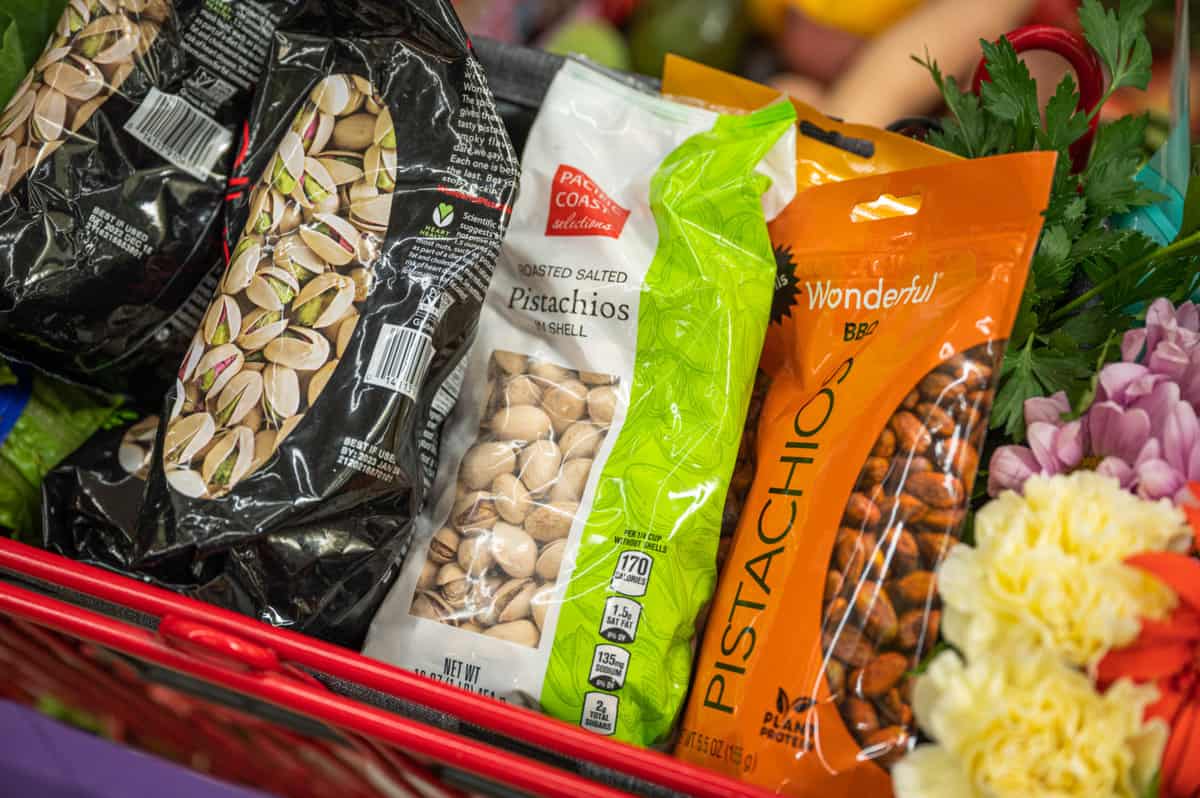
Look for the California Grown license plate on the product packaging or store shelves. Pro-tip: Stores should list the country of origin for produce. If your pistachios were grown in the United States, it’s safe to say they were California Grown.
The best pistachio recipes
Now that you’ve learned all about pistachios, let’s look at a few of our favorite ways to enjoy them!
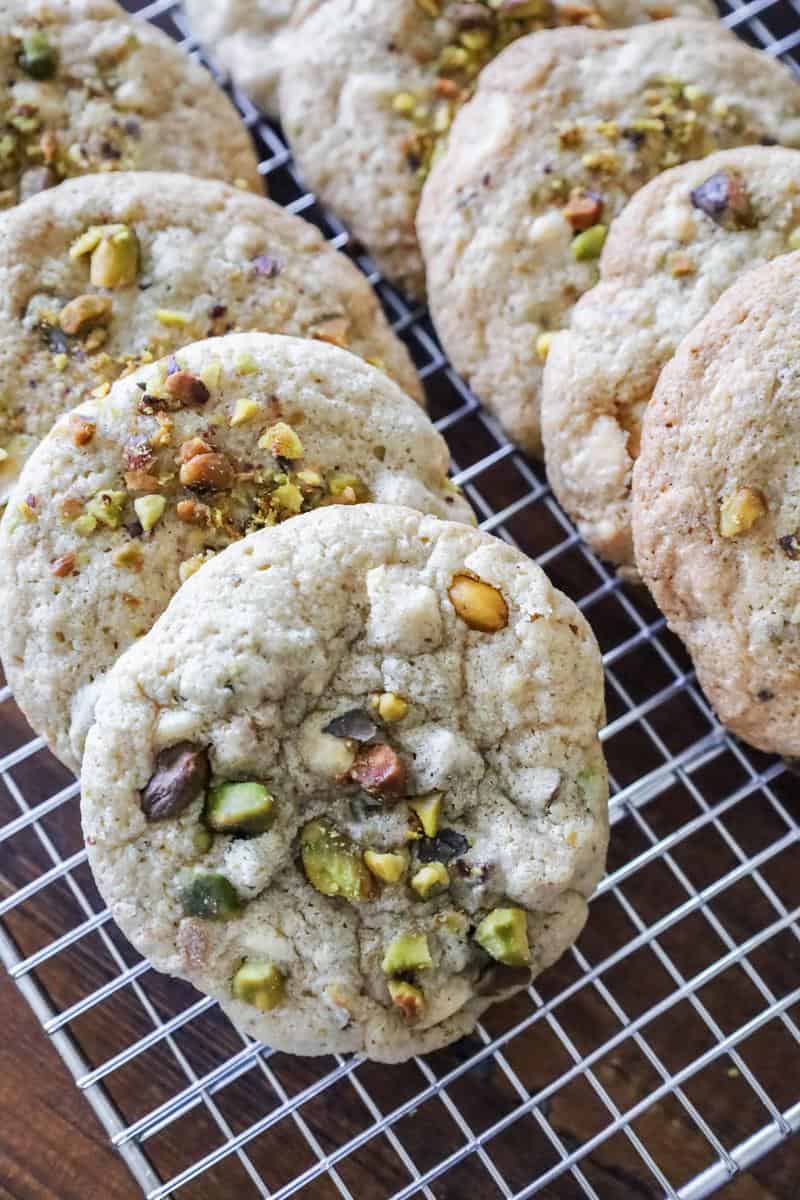
Pistachio + White Chocolate Chip Cookies
What’s a Pistachio grower’s favorite way to enjoy pistachios? Our friends at Keenan Farms share one of their favorite recipes – Pistachio + White Chocolate Chip Cookies!
Lime Cheesecake with Pistachio Crust
California Grown citrus adds a zesty zing to this Lime Cheesecake recipe. Even better – the nutty pistachio crust is gluten-free, grain-free and incredibly delicious.

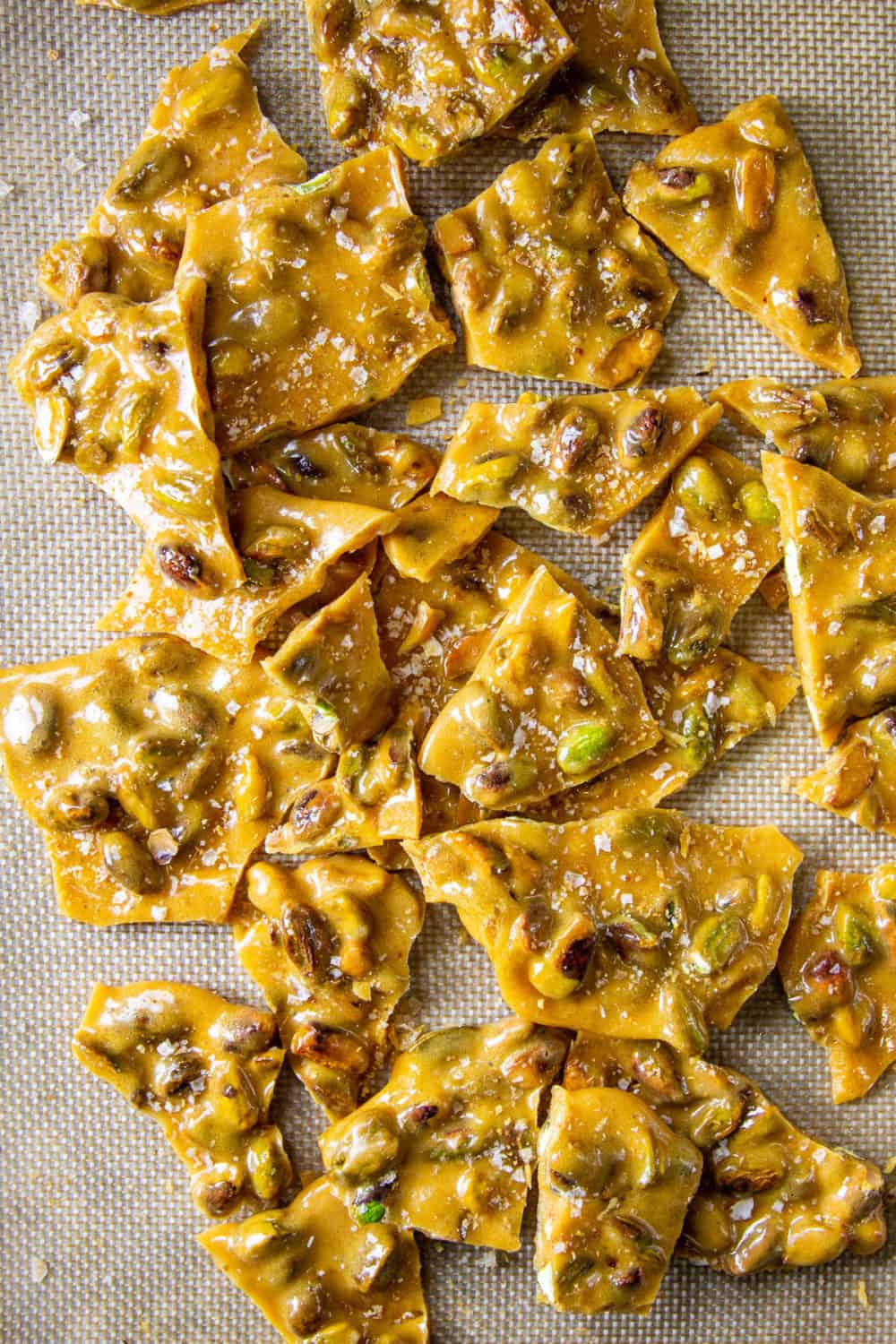
Pistachio Brittle
Store-bought candy can’t hold a candle to a batch of our Pistachio Brittle. PS – It’s the perfect homemade holiday gift!
Pistachio Shortbread Cookies with Edible Flowers
These gorgeous Pistachio Shortbread Cookies with Edible Flowers from G-Free Foodie taste as good as they look!

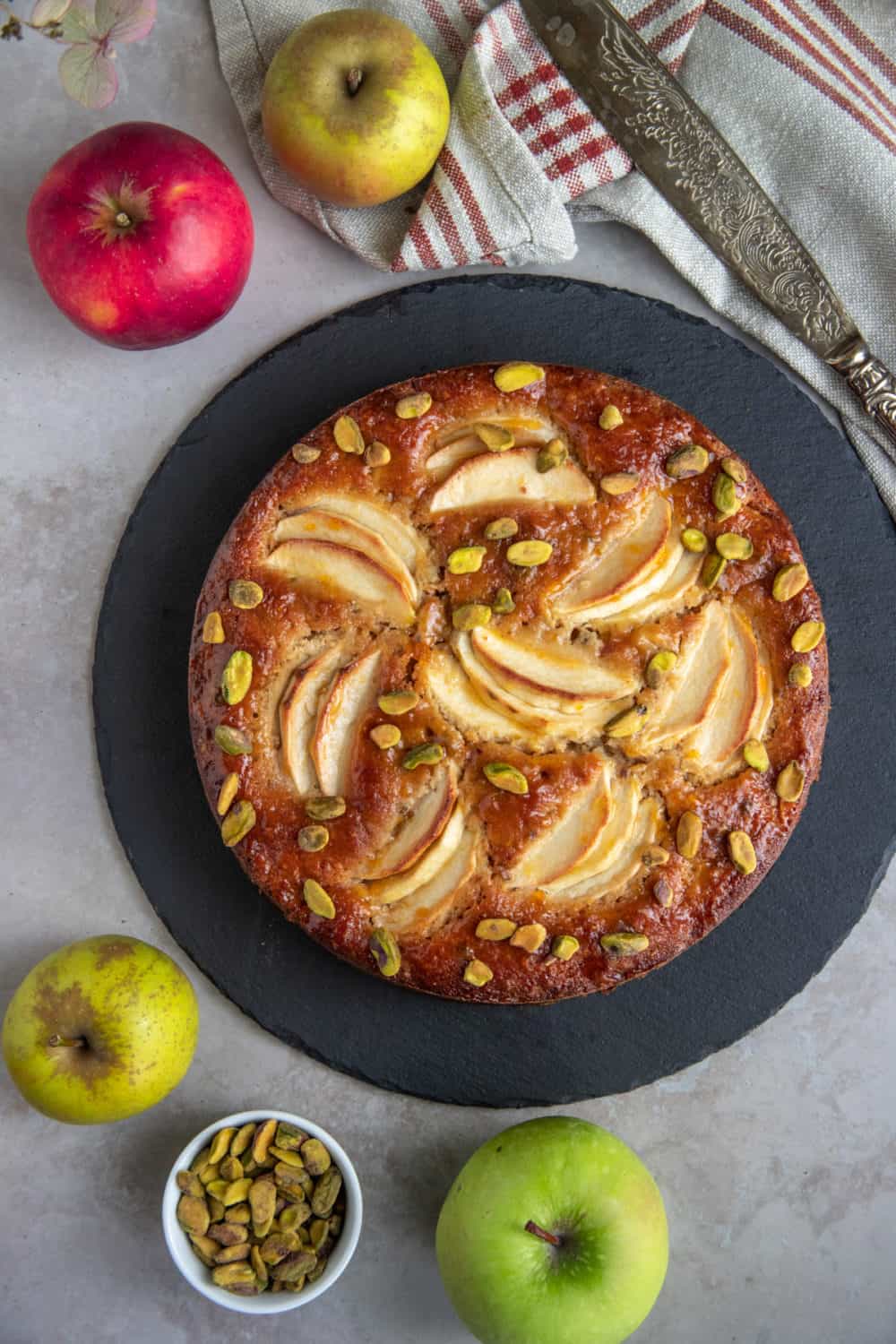
Apple Cake with Pistachios
Pistachios are an unexpected (but incredible!) addition to this tasty Apple Cake with Pistachios from Bakes by Brown Sugar.
Roasted Grape + Candied Pistachio Ice Cream Sundae
Who needs fudge sauce? Swap the chocolate sundae for this Roasted Grape + Candied Pistachio Ice Cream Sundae from Jerry James Stone. It’s loaded with big, bold flavors!
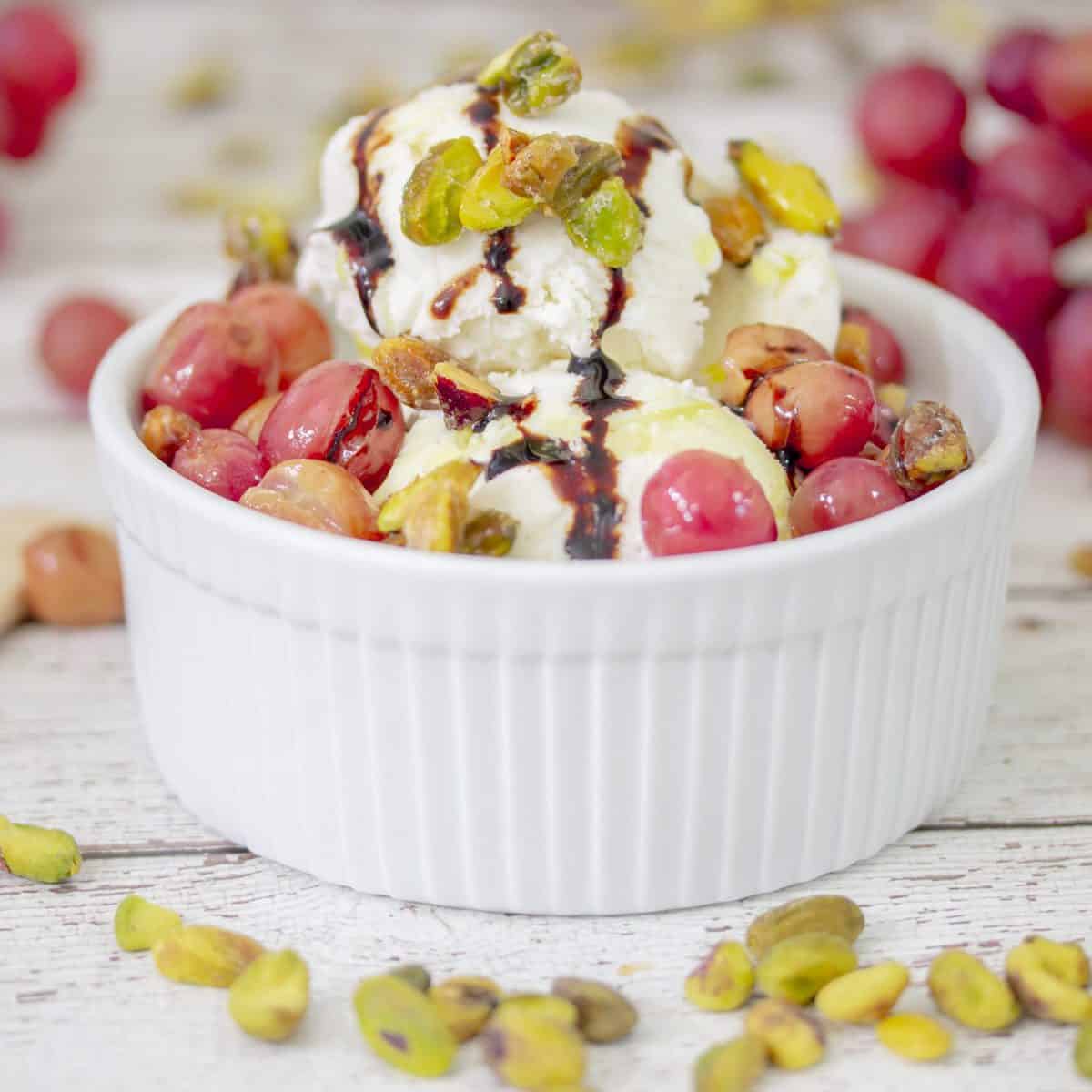
Learn how your favorite produce is grown!
Do you love fun farm facts? Check out our “How It’s Grown” series!

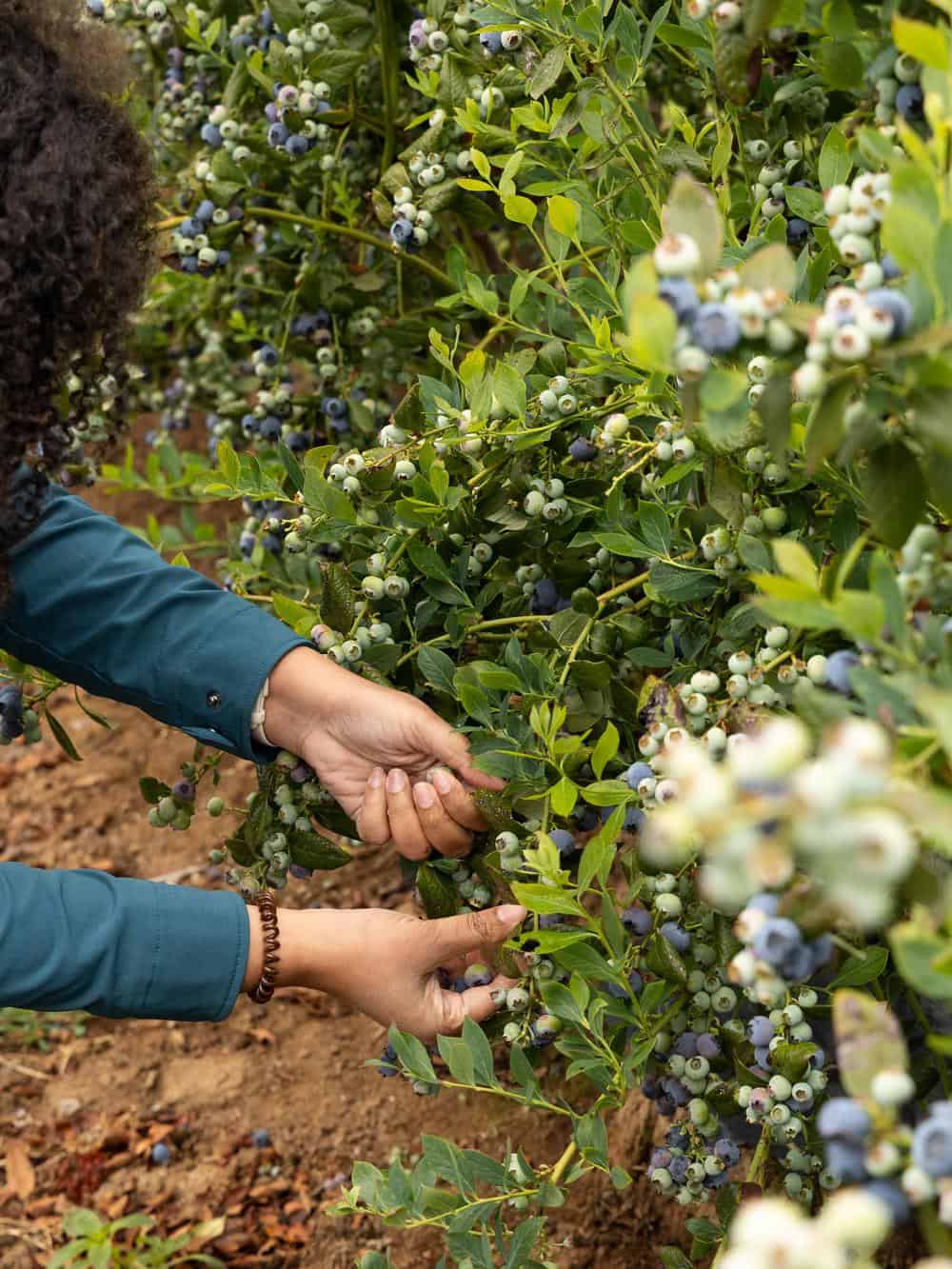

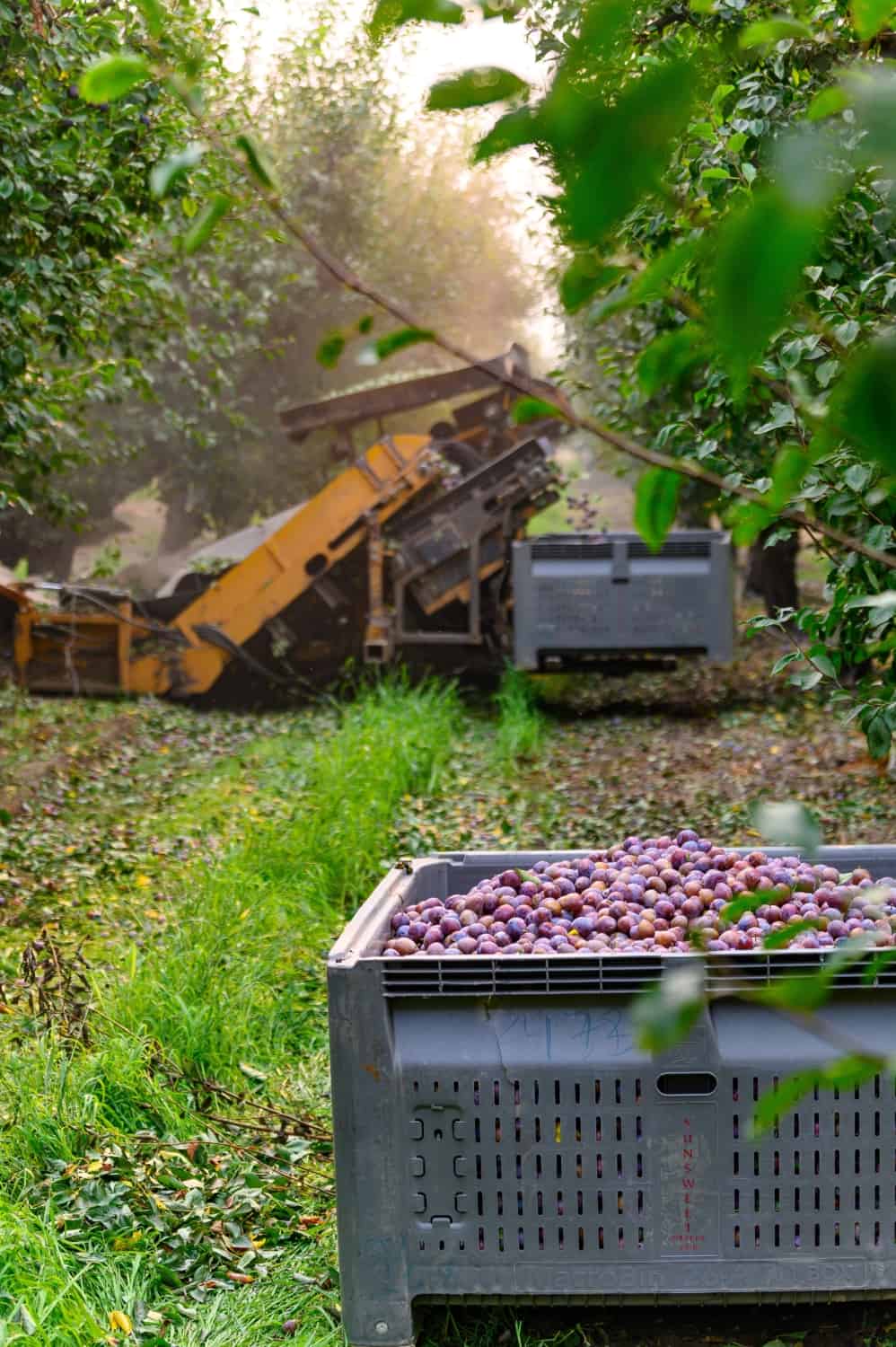
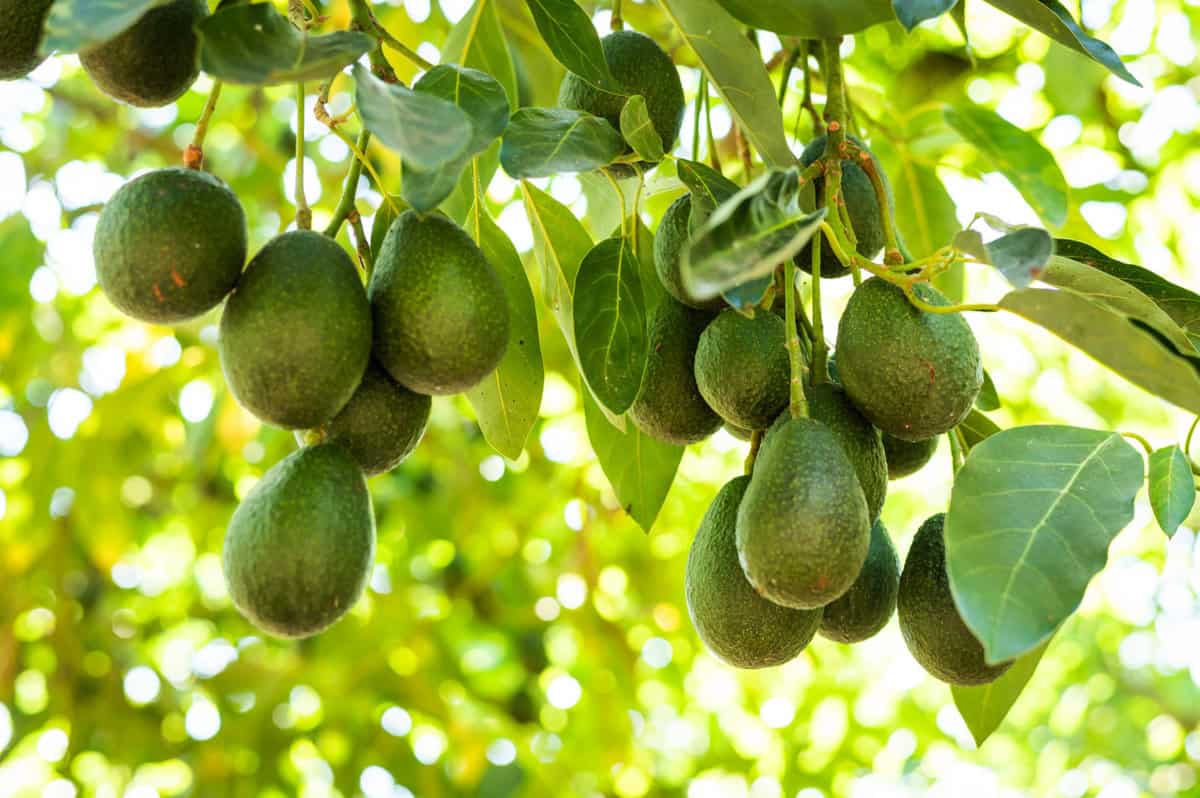
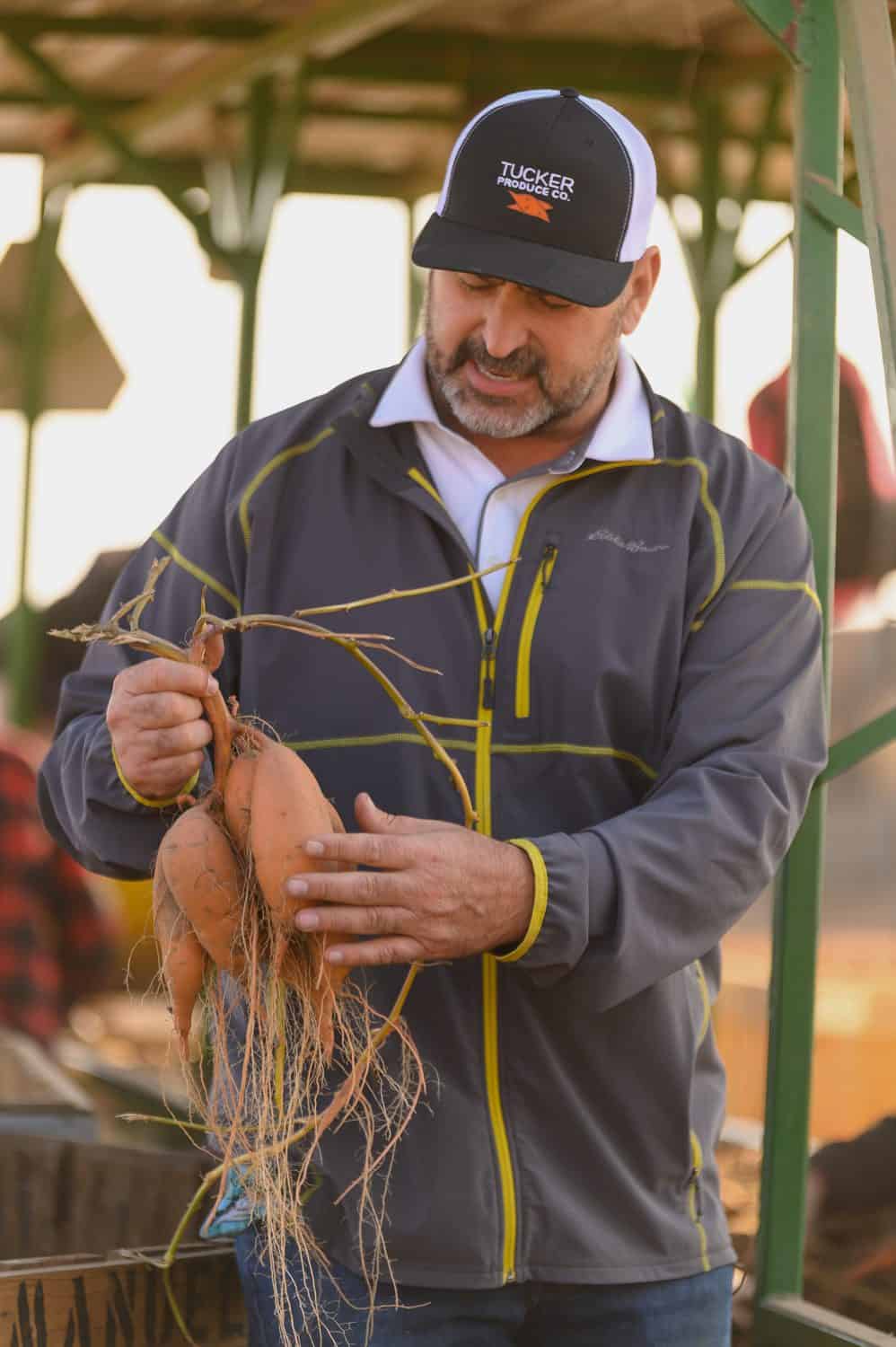




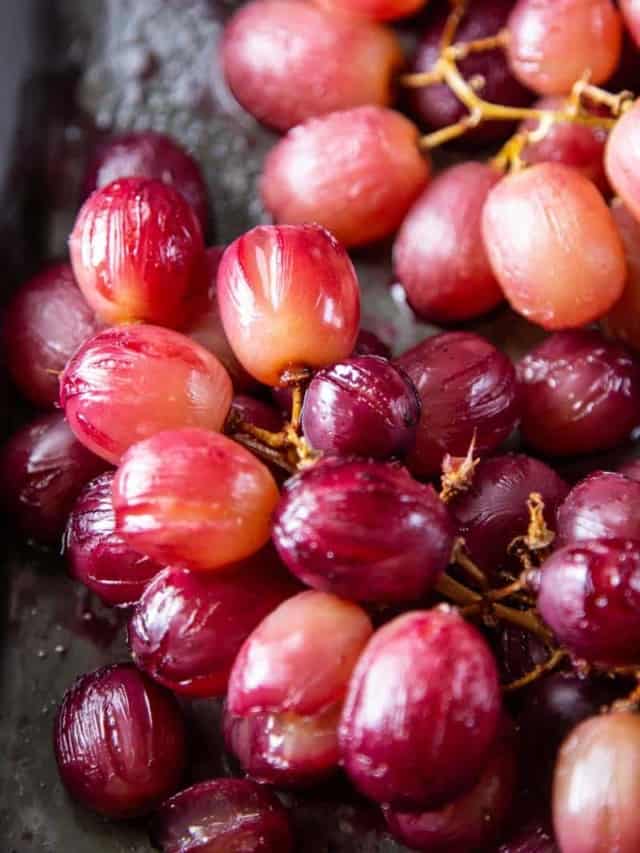

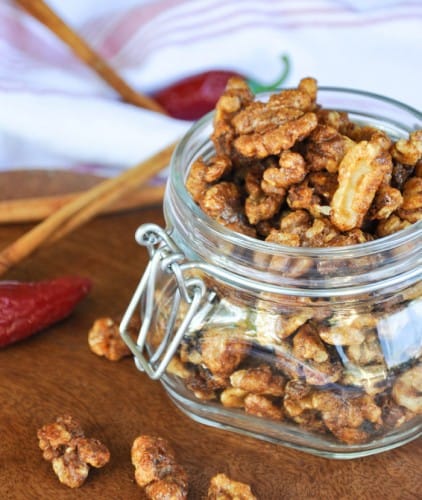

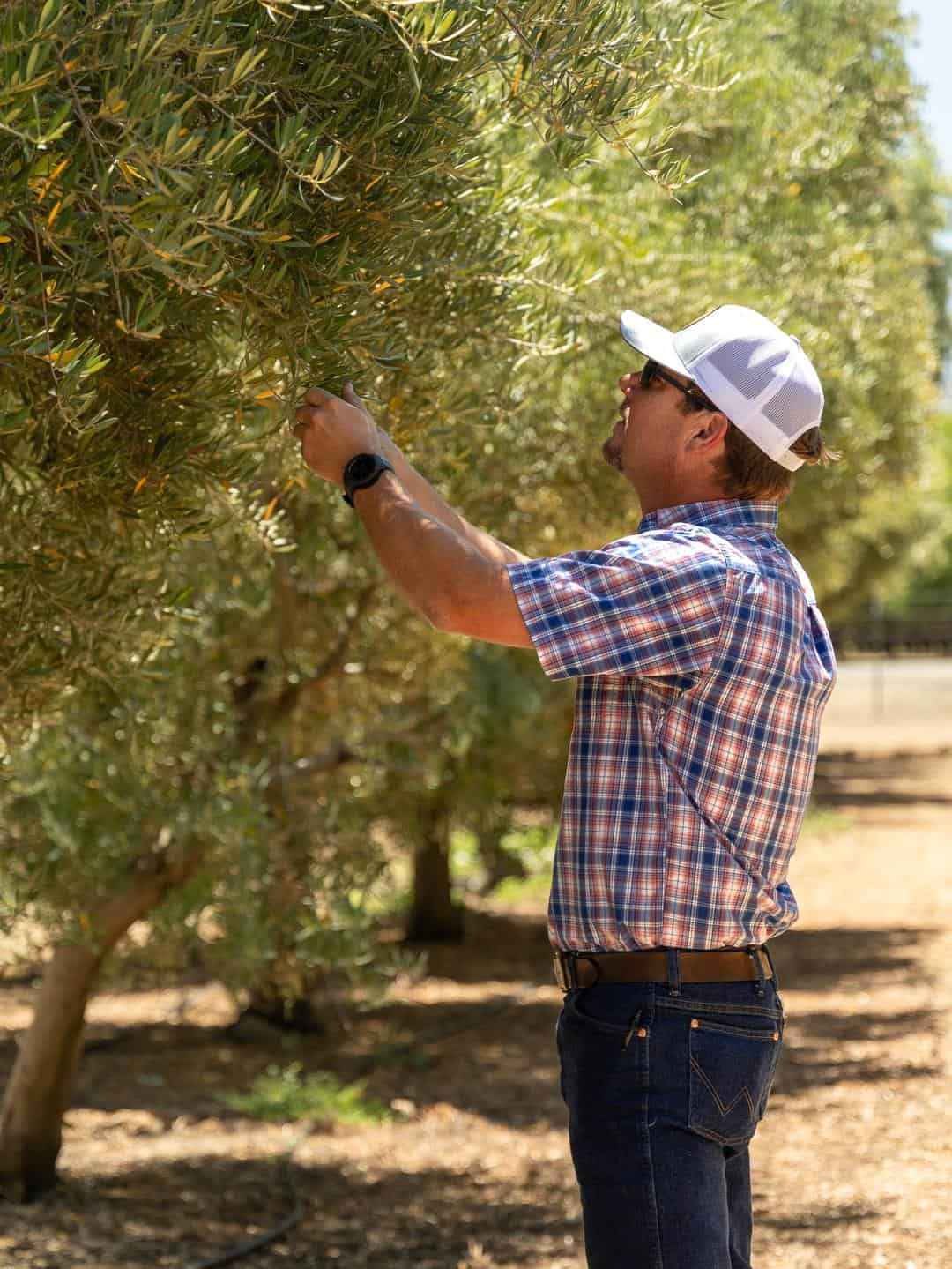
Article by Hilary Rance. Photography by James Collier.
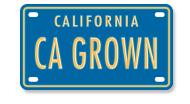
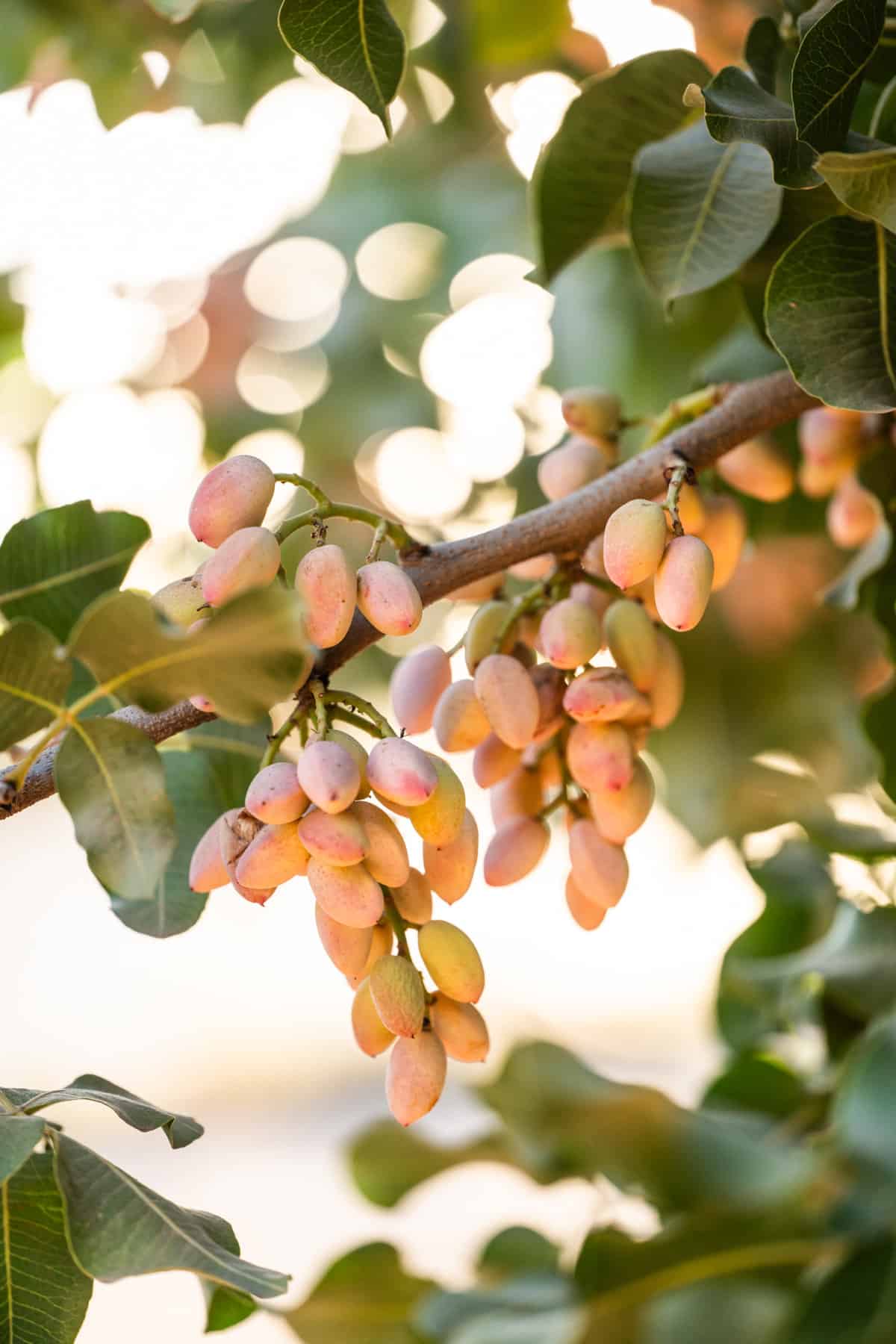
this website is wonderful. it answers so many questions.
thanks